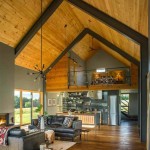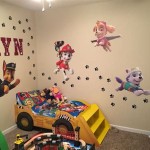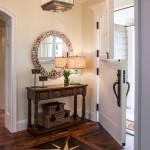How To Decorate a Side Table in the Living Room
Side tables are often overlooked, yet these versatile pieces offer valuable real estate for enhancing a living room's aesthetic appeal and functionality. Decorating a side table effectively blends practicality with style, creating a focal point that complements the overall room design. This article explores various methods and considerations for styling a side table to maximize its potential.
Layering with Height and Dimension: Creating visual interest often involves incorporating items of varying heights. A tall table lamp provides essential task lighting and establishes a vertical presence. Balancing this height with lower objects like stacked books, small sculptures, or decorative bowls adds depth and prevents a monotonous appearance. This interplay of heights draws the eye and adds dimension to the display.
The Importance of a Focal Point: Every well-styled side table benefits from a central, eye-catching element. This could be a striking piece of art, a unique vase with fresh flowers, or a statement lamp with an interesting base. The focal point anchors the arrangement and sets the tone for the other decorative elements. Choosing a focal point that complements existing room décor ensures a cohesive design.
Balancing Functionality and Aesthetics: Side tables serve a practical purpose, offering a surface for drinks, remotes, and other necessities. Decorative elements should not entirely overshadow this functionality. Incorporating practical items like coasters or a small tray can elevate their appearance while maintaining usability. Striking a balance between decorative and functional pieces ensures the side table remains both stylish and practical.
Incorporating Greenery and Natural Elements: Introducing natural elements can soften the look of a side table and bring a touch of life to the living room. A small potted plant, a vase of fresh flowers, or even a collection of interesting stones or shells can add a refreshing organic touch. These elements contribute texture and visual appeal while enhancing the overall ambiance.
Playing with Textures and Materials: Mixing different textures and materials adds depth and complexity to a side table arrangement. Combining the smooth surface of a ceramic lamp with the rough texture of a woven basket or the metallic sheen of a decorative box creates a visually stimulating display. The interplay of textures provides tactile interest and prevents the arrangement from feeling flat or one-dimensional.
Considering the Scale and Proportion: The size and shape of the side table should dictate the scale of the decorative items. Overcrowding a small table with large objects can appear cluttered and overwhelming, while a large table with sparsely placed small items may seem unbalanced. Choosing items proportionate to the table's size ensures a visually harmonious arrangement.
Reflecting Personal Style: A side table offers an opportunity to inject personality into the living room. Displaying cherished books, travel souvenirs, or family photos adds a personal touch and creates a unique focal point. These personal elements contribute character and warmth to the space, reflecting the individual's interests and experiences.
Utilizing Books for Height and Visual Interest: Stacks of books can serve as both decorative elements and functional platforms. Placing a small sculpture or decorative bowl on top of a stack of books adds height and visual interest. The books themselves contribute color and texture, offering an opportunity to subtly incorporate personal interests into the display.
The Role of Lighting: The lighting on and around the side table plays a crucial role in its overall impact. A well-placed table lamp not only provides task lighting but also highlights the decorative elements. Consider the direction and intensity of the light to ensure it enhances the arrangement and creates a warm and inviting atmosphere.
Creating a Cohesive Look with the Surrounding Décor: The décor on the side table should complement the overall style of the living room. Consider the existing color palette, patterns, and textures when selecting decorative items. This cohesive approach ensures the side table integrates seamlessly into the room's design, enhancing its overall aesthetic appeal.
Embracing Minimalism: A minimalist approach can be equally effective in styling a side table. A single statement piece, such as a sculptural lamp or a vase with a single stem, can create a striking focal point. This less-is-more approach emphasizes clean lines and simplicity, creating a sense of calm and sophistication.
Regularly Refreshing the Arrangement: Periodically updating the arrangement on the side table can prevent the space from feeling stagnant. Swapping out decorative items, changing the flowers, or rearranging existing pieces can breathe new life into the room and create a fresh perspective. This regular refresh keeps the space feeling dynamic and visually stimulating.
Considering the Traffic Flow: The placement of items on the side table should not impede movement around the living room. Avoid overcrowding the table with items that could easily be knocked over or create obstacles. Mindful placement ensures the side table remains functional and accessible while contributing to the overall flow of the room.

How To Style An End Table Like A Pro Stonegable

Home Decor 101 How To Decorate End Tables The Turquoise

Stylish Side Table Decor That Pulls A Room Together

Home Decor 101 How To Decorate End Tables The Turquoise

27 Coffee Table Decor Ideas How To Style A Modern

9 Gorgeous Accent Table Décor Ideas Living Spaces

6 Gorgeous End Table Decor Ideas How To Style An Mozie

Home Decor 101 How To Decorate End Tables The Turquoise

Simplified Decorating End Table Decor Ideas Bless Er House

Home Decor 101 How To Decorate End Tables The Turquoise
Related Posts







